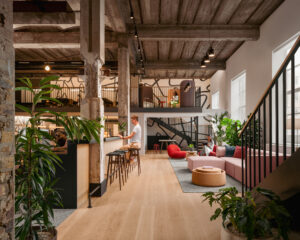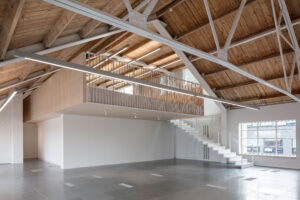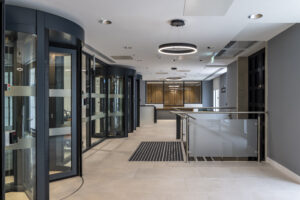Modern meets memory – delivering with respect to legacy
3rd July 2025
Working in heritage buildings is never just about stripping out and fitting back. It’s about understanding what’s already there, the details, the craftsmanship, and the character and finding ways to make them work for today. These buildings carry stories and deserve to be treated thoughtfully.
We’ve been lucky to work on some fantastic buildings with real history.
1 Malet Street – restoring a Bloomsbury icon
At 1 Malet Street , we restored a Bloomsbury building for the University of London, turning it into a modern office space while keeping its original charm. We brought period features back to life, exposing high ceilings and restoring elegant details, all while making it a flexible, modern workspace.
Francis House – a warehouse full of quirks
At Francis House, a Victorian warehouse from the 1900s, we worked around hidden chimneys and uneven floors to make sure the design fit perfectly with the building’s quirks. We later returned to deliver Edelman’s 38,200 sq ft London HQ in the same building, adding flexible work areas, a 60-person boardroom, meeting rooms and even a theatre bar, all shaped by staff feedback.

Harella House – industrial heritage with a view
We also transformed Harella House in Clerkenwell. Originally a 1930s garment factory, the building has large Crittall windows and strong industrial character. We restored original features like exposed steel columns and timber boards, replaced the roof, added a mezzanine, and created a rooftop garden, blending the old with the new.

Queen Mary University – breathing new life into a listed landmark
More recently, we were asked to refurbish the Grade II listed Queens’ Building at Queen Mary University of London. This project will create a contemporary social heart for the campus while respecting the building’s heritage. The project will create a contemporary social heart for the campus, including a new enclosed atrium, glazed roof and improved access, all designed to breathe new life into a historic space.
Government Property Agency – modern function in protected spaces
We’ve also delivered two office fit outs for the Government Property Agency across its Westminster estate, both within listed buildings. These included seven floors at 55 Whitehall, a Grade II* listed Edwardian building, and ten floors at 3-8 Whitehall Place, as part of the government’s campus programme.
The challenge was balancing heritage protection with modern functionality. Initial proposals were rejected twice by English Heritage, but we worked closely with the GPA and design team to unlock a solution. Existing chimneys were used to discreetly route ductwork and services, helping us preserve the protected layout and reduce impact.
Key heritage works included:
- Using vapour-open paints to protect original plasterwork
- Designing lighting layouts to avoid decorative elements
- Restoring cornicing using templates taken from the originals
- Numbering and reinstating picture rails, wainscoting and skirting
- Upgrading the heritage lifts in line with EN81-80 standards
All of this took place in a live, secure environment with tight access constraints and phased handovers. We also managed façade cleaning, new MEPH installations and lift refurbishments.
“It was important for GPA to collaborate with experts who understood our requirements and could navigate the challenges presented when working with listed properties. The BW team were a joy to work with and went above and beyond to find solutions, exceeding expectations. We are thrilled with the final result.”
Pat Cross, Stakeholder Manager, Government Property Agency

Live Nation – performance meets preservation
Over in Clerkenwell, we helped Live Nation move into one of London’s most iconic Victorian warehouses. The Farmiloe Building is a Grade II listed former merchant’s HQ, now home to the global entertainment brand’s new London base.
We delivered a full Cat B fit out across five floors of the restored warehouse and new build extension. The space includes a live music stage in the atrium, listed iron staircases, exposed hoists and safes, and a suite of heritage meeting rooms, all updated for today’s needs without compromising the character of the building.
There were challenges to work through, including incomplete base build information and unresolved heritage approvals. We validated the base systems, worked closely with planners, and adapted to changing COVID restrictions to keep delivery on track. Our team also brought the design to life using 3D visualisations and a themed open day that helped staff connect with the space from the start.
Making heritage work for today
For us, working in heritage buildings is about more than preservation. It’s about respecting the past while making spaces that work for today. When you approach these buildings with care, you create something authentic that connects history with the future.
Restoring heritage isn’t about recreating the old. It’s about working with it and making it work now.